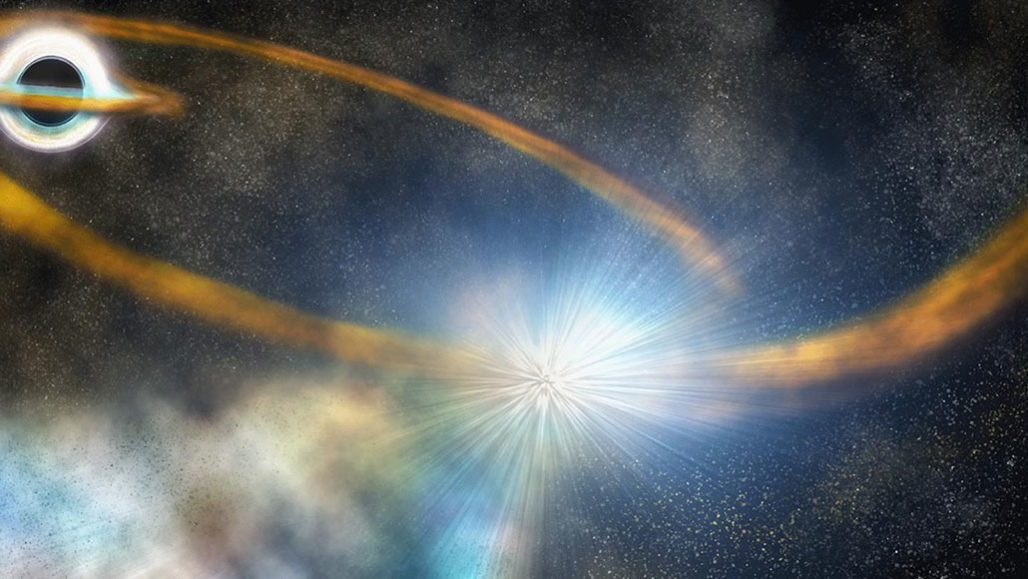accretion disk A ring or flattened plane of gas, plasma or dust (or other materials) that orbits a celestial object, and loses some energy and speed as gravity causes this material to slowly spiral in toward the object it surrounds.
black hole: A region of space having a gravitational field so intense that no matter or radiation (including light) can escape.
gravity: The force that attracts anything with mass, or bulk, toward any other thing with mass. The more mass that something has, the greater its gravity.
light-year The distance light travels in one year, about 9.48 trillion kilometers (almost 6 trillion miles). To get some idea of this length, imagine a rope long enough to wrap around the Earth. It would be a little over 40,000 kilometers (24,900 miles) long. Lay it out straight. Now lay another 236 million more that are the same length, end-to-end, right after the first. The total distance they now span would equal one light-year.
mass: A number that shows how much an object resists speeding up and slowing down — basically a measure of how much matter that object is made from.
matter: Something that occupies space and has mass. Anything on Earth with matter will have a property described as "weight."
orbit: The curved path of a celestial object or spacecraft around a star, planet or moon. One complete circuit around a celestial body.
radiation: (in physics) One of the three major ways that energy is transferred. (The other two are conduction and convection.) In radiation, electromagnetic waves carry energy from one place to another. Unlike conduction and convection, which need material to help transfer the energy, radiation can transfer energy across empty space.
star: The basic building block from which galaxies are made. Stars develop when gravity compacts clouds of gas. When they become hot enough, stars will emit light and sometimes other forms of electromagnetic radiation. The sun is our closest star.








